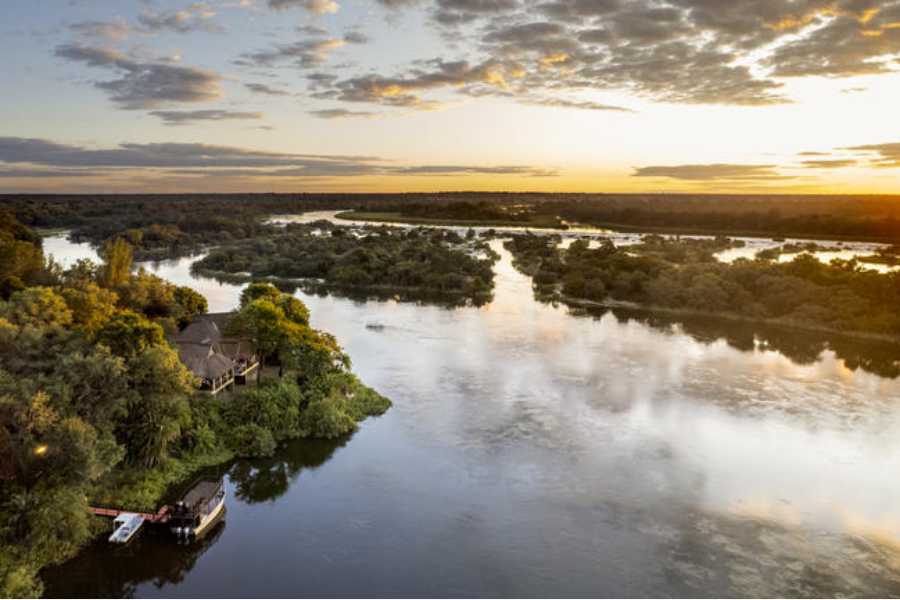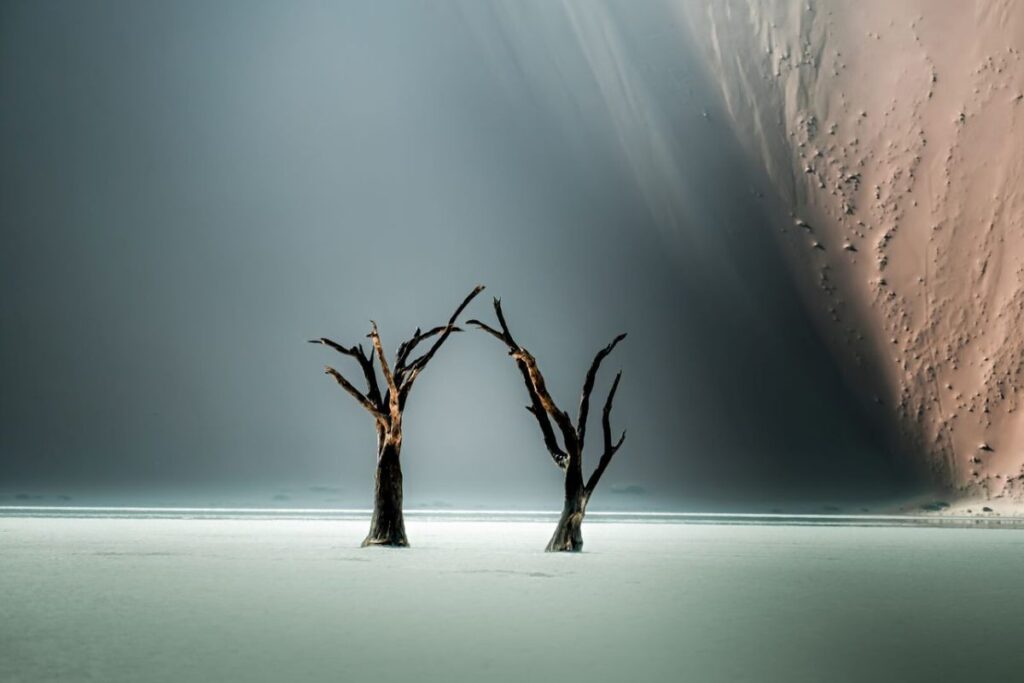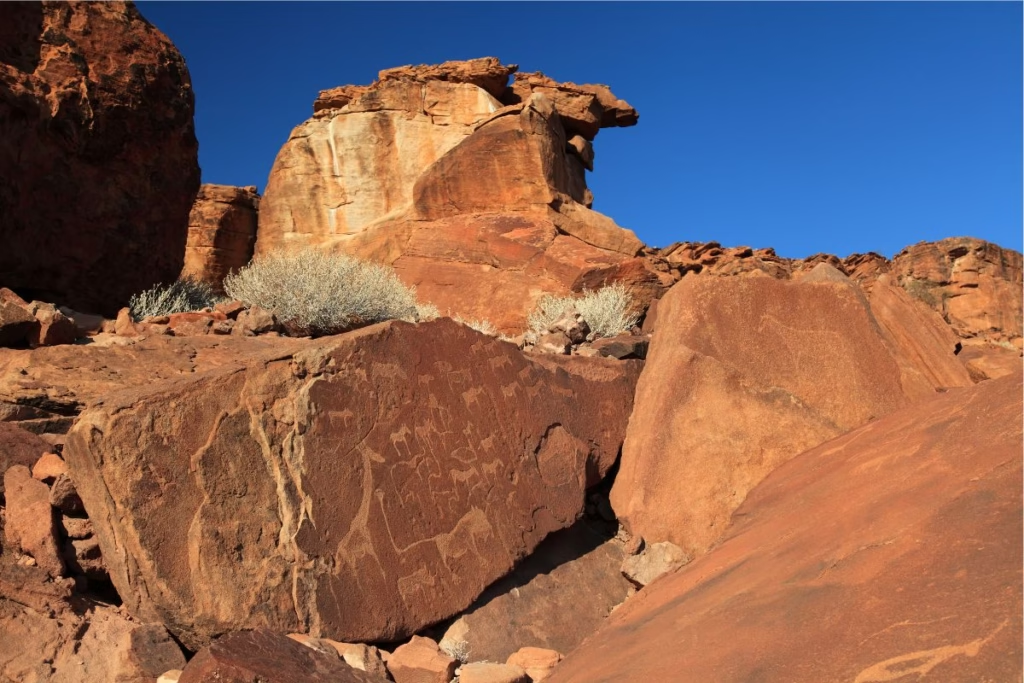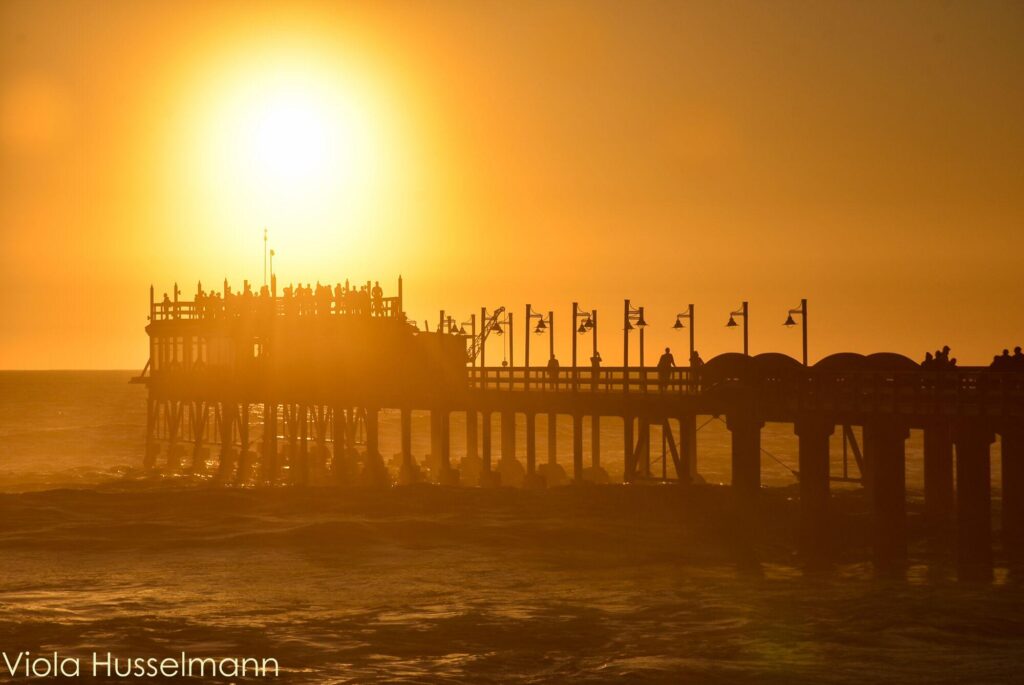Namibia, with its surreal landscapes, wild terrains, and vast open spaces, is the perfect destination for a self-drive safari adventure. Cape Town is a common starting point for a Namibia self-drive safari, thanks to its accessibility from Cape Town Airport and the variety of experiences it offers, including fine dining, whale watching, and outdoor activities. From iconic red dunes and eerie coastal shipwrecks to rich wildlife habitats, Namibia offers diverse experiences at every turn. With your own vehicle, you can explore this beautiful country at your pace, crafting a personalized journey through deserts, savannahs, and coastlines. Here’s a complete guide on must-see stops and essential tips for navigating Namibia’s top destinations by road.
Essential Preparations for a Namibia Self-Drive Safari
Planning and preparation are key to having a smooth and enjoyable experience on Namibia’s rugged and often remote roads. Here are the key aspects to consider before hitting the road.
Choosing the Right Vehicle
When it comes to Namibia’s terrains, not just any car will do. While main roads are generally well-maintained, many of the most scenic routes require a sturdy 4×4.
A 4×4 provides the capability to handle sandy desert trails, gravel roads, and occasional rocky stretches. Look for vehicles with added features like GPS, spare tires, and a high fuel capacity for long journeys between refueling points and rest camps. Having a tire repair kit and knowing how to use it can be a lifesaver on Namibia’s gravel roads.
Understanding the Best Time to Visit
Namibia’s seasons can have a big impact on what you’ll see and experience. The dry season (May to October) is generally considered the best time for wildlife viewing, especially in Etosha National Park. During these months, animals gather around waterholes, making them easier to spot.
An early morning game drive in Etosha National Park offers a unique opportunity to explore the wildlife in the cooler hours of the day, providing better viewing opportunities.
For a desert experience in Sossusvlei and Namib Desert, cooler months (April to September) are ideal, as daytime temperatures are milder. The rainy season, from November to March, brings lush landscapes and dramatic skies, but some remote roads may become challenging or impassable.
Safety and Navigation Tips
Navigating Namibia can be straightforward, but safety precautions are essential. Keep your speed down on gravel roads, and be cautious of sudden changes in road conditions. Carry a detailed map, use offline navigation apps, and keep in mind that cell service can be limited in remote areas.
Emergency preparedness is crucial; pack a first aid kit, water, and a satellite phone if venturing far from major towns. Road assistance services are available, but response times can be slow in remote areas.
Top Must-See Stops on a Namibia Self-Drive Safari
Once you’re prepared, it’s time to set off on a journey to some of Namibia’s most awe-inspiring destinations.
Windhoek, Namibia’s capital, is often the starting point for most travelers. While many are eager to head straight into the wild, Windhoek has its own charm and is worth a day’s exploration.
Check out local markets for handmade crafts, enjoy traditional Namibian cuisine, and visit historical sites like the Christuskirche and the Independence Memorial Museum. Stock up on essentials like snacks, extra water, and fuel here before venturing into remote areas.
Sossusvlei – The Heart of the Namib Desert
No Namibia itinerary is complete without a visit to Sossusvlei in the Namib-Naukluft National Park. Known for its towering red sand dunes and stark white salt pans, Sossusvlei offers one of the most striking desert landscapes in the world.
Wake up early to hike Dune 45 or Big Daddy, which offer panoramic views of the surrounding desert. Deadvlei, with its skeletal trees set against a white clay pan, provides a surreal backdrop for photography. Visiting in the early morning or late afternoon gives you the best light for photos and cooler temperatures for climbing. Additionally, consider taking scenic flights over the Namib Desert to gain a new perspective on the stunning landscapes from the air.
Deadvlei and Other Nearby Attractions
Deadvlei, located near Sossusvlei in the Namib-Naukluft National Park, is a must-see for any traveler. This stunning salt pan, surrounded by some of the tallest sand dunes in the world, is home to the iconic dead camelthorn trees, which create a stark and surreal landscape. The contrast of the dark, skeletal trees against the white clay pan and red dunes is a photographer’s dream.
While Deadvlei is the star attraction, the surrounding area offers other fascinating sites. Sesriem Canyon, a scenic gorge carved out by the Tsauchab River, provides a cool and shaded retreat from the desert heat. A walk through the canyon reveals layers of sedimentary rock and offers a glimpse into the geological history of the region. Another nearby highlight is the Elim Dune, a picturesque sand dune that offers breathtaking views of the surrounding landscape, especially at sunrise or sunset.
Swakopmund – Namibia’s Coastal Gem
Swakopmund, a charming coastal town, offers a refreshing change of scenery with its cool Atlantic breeze. Known for its German colonial architecture and adventure sports, Swakopmund is a great place to relax or seek thrills.
Popular activities here include sandboarding on the dunes, quad biking, and even skydiving. Visit the Swakopmund Museum, take a stroll along the historic jetty, or explore the nearby “moon landscape” for a look at otherworldly desert scenery.

Skeleton Coast – A Wild Coastal Adventure
Heading north from Swakopmund, the Skeleton Coast is famed for its foggy shores, shipwrecks, and rugged beauty. This stretch of coastline is hauntingly beautiful and offers a true sense of isolation.
A self drive trip is a comprehensive way to explore Namibia’s diverse landscapes and experiences, offering flexibility and adventure.
Notable stops include the Cape Cross Seal Reserve, where thousands of Cape fur seals can be seen lounging on the beach. Further along, you’ll find remnants of shipwrecks scattered along the shore, telling stories of a treacherous past. The Skeleton Coast is remote and often windy, so prepare accordingly.
Other Coastal Towns and Scenic Drives
Beyond Swakopmund, Namibia’s coastline is dotted with charming towns and scenic routes that are worth exploring. Walvis Bay, a bustling port town, offers a variety of outdoor activities. Take a dolphin-watching tour to see these playful creatures up close, or embark on a scenic flight over the Skeleton Coast for a bird’s-eye view of shipwrecks and dramatic coastal landscapes.
Lüderitz, with its rich German colonial history, is another coastal gem. The town’s colorful buildings and stunning coastal scenery make it a delightful stop. Don’t miss the chance to visit Kolmanskop, a nearby ghost town slowly being reclaimed by the desert sands.
For those who enjoy road trips, the drive along the coast offers stunning views of the Atlantic Ocean. Stop at picturesque towns like Henties Bay and Wlotzkasbaken, where you can enjoy the serene coastal atmosphere and perhaps spot some local wildlife.
Damaraland – Ancient Landscapes and Rock Art
Damaraland is one of Namibia’s most scenic and culturally rich regions. Here, you’ll find Twyfelfontein, a UNESCO World Heritage Site that showcases ancient rock engravings left by indigenous San people. Nearby, Brandberg Mountain is home to more rock art and offers stunning vistas.
Hoanib Valley Camp is one of the diverse accommodation options in Damaraland, offering unique experiences in stunning landscapes.
This region is also known for its desert-adapted elephants and rhinos, a unique sight in an area that feels both prehistoric and untouched. The dramatic scenery and rock formations make Damaraland a must-visit for nature enthusiasts.
Etosha National Park – Namibia’s Wildlife Haven
Etosha is Namibia’s premier wildlife destination, known for its salt pans, waterholes, and incredible wildlife biodiversity. The park is home to elephants, lions, rhinos, and a variety of bird species, making it ideal for self-drive safaris.
Head to waterholes like Okaukuejo and Halali, where animals gather, especially in the dry season. Lodging options range from campsites in nature reserve to luxury lodges within the park, but booking ahead is advised. Okonjima Plains Camp is another excellent lodging option in Namibia, known for its wildlife conservation efforts through its affiliation with the AfriCat foundation. Early morning and late afternoon are the best times for wildlife viewing.
Onguma Lodge is also part of the diverse lodging options available, offering unique stays amidst stunning landscapes and excellent wildlife viewing experiences.
Other National Parks and Reserves
Namibia’s natural beauty extends beyond Etosha National Park, with several other national parks and reserves offering unique landscapes and wildlife experiences. The Namib-Naukluft National Park, one of the largest in Africa, features a stunning array of landscapes, from the plains game towering sand dunes to rugged mountains and coastal scenery. It’s a paradise for hikers and nature lovers.
The Skeleton Coast National Park, known for its remote and rugged beauty, is home to desert-adapted elephants and lions. The park’s eerie shipwrecks and foggy shores tell tales of a treacherous past, making it a fascinating destination for adventurous travelers.
Another noteworthy park is the Waterberg Plateau Park, a scenic area with a rich history and diverse wildlife, including white rhinos desert elephants and leopards. The park’s dramatic cliffs and lush vegetation provide a striking contrast to Namibia’s arid landscapes.
Caprivi Strip – Namibia’s Hidden Paradise
The Caprivi Strip, located in northeastern Namibia, offers a lush, green contrast to the arid landscapes found elsewhere. This area is characterized by rivers and wetlands, supporting abundant birdlife and unique wildlife.
Highlights include Bwabwata National Park, the Zambezi River, and Mahango Game Reserve. The Caprivi Strip provides a more water-based safari experience, where visitors can enjoy boat trips, fishing, and viewing animals like hippos and crocodiles along the riverbanks.

Travel Tips for a Memorable Self-Drive Safari
Making the most of your Namibia self-drive safari requires a few additional tips to ensure comfort, safety, and respect for the environment.
Accommodation Tips
Accommodation in Namibia ranges from budget-friendly campsites to luxury lodges. In high-demand areas like Etosha and Sossusvlei, booking well in advance is crucial. Many campsites offer basic facilities, while lodges can provide a bit of extra comfort after a long day on the road.
Packing Essentials for the Road
Packing the right gear can make all the difference. Essentials include ample water, non-perishable snacks, sun protection, a basic tool kit, and spare tires. If you’re camping, make sure to bring quality sleeping gear suited for Namibia’s fluctuating temperatures.
Having a satellite phone, first aid kit, and repair tools can help you handle unexpected situations, especially if you’re traveling in remote regions. However, Wi-Fi is available at most lodges and restaurants, and you can purchase a travel plan with an MTC Sim Card on arrival at the Hosea Kutako Airport.
Respecting Local Culture and Environment
Namibia’s local communities and natural landscapes are an integral part of its beauty. Take the time to learn basic etiquette when interacting with locals, and always ask permission before taking photos in villages. Respect for the environment is also crucial—avoid littering, stay on designated paths, and observe wildlife from a safe distance.
Namibian Culture and History
Namibia’s rich and diverse culture is a blend of African, European, and Asian influences. To delve into the country’s history and culture, visit the National Museum of Namibia in Windhoek, where you can learn about Namibia’s past and its journey to independence. Cultural festivals and events throughout the year offer a vibrant display of traditional music, dance, and crafts.
Traditional communities, such as the Himba people, provide unique insights into Namibia’s cultural heritage. The Himba are known for their distinctive appearance and traditional way of life, which has remained largely unchanged for centuries. Visiting a Himba village offers a rare opportunity to learn about their customs and daily life.
Historic towns like Lüderitz and Swakopmund showcase a mix of German and African architecture, reflecting Namibia’s colonial past. Strolling through these towns, you’ll find charming buildings, quaint cafes, and a sense of history that adds depth to your Namibian adventure.
Budgeting and Costs
Planning a self-drive safari in Namibia involves budgeting for various expenses, from vehicle rental to accommodation and activities. Here’s a breakdown of estimated costs to help you plan your trip:
Vehicle rental: Expect to pay between N$500 and N$1,000 per day (approximately $35-$70 USD) for a sturdy 4×4 vehicle, essential for navigating Namibia’s diverse terrains.
Fuel: Fuel costs range from N$10 to N$20 per liter (approximately $0.70-$1.40 USD), depending on the location and type of fuel.
- Accommodation: Prices vary widely, from budget-friendly campsites at N$500 per night (approximately $35 USD) to luxury lodges at N$2,000 and more per night (approximately $140 USD).
Food and drink: Daily expenses for food and drink can range from N$100 to N$300 (approximately $7-$20 USD), depending on whether you choose to cook your own meals or dine out.
Activities and entrance fees: Entrance fees to national parks and other attractions typically range from N$600 to N$2,500 per person (approximately $33-$138 USD).
Overall, the estimated cost of a self-drive safari in Namibia can range from N$40,000 to N$120,000 per person (approximately $2,200-$120 000 USD) for a 7-10 day trip, depending on your preferences and budget. These estimates provide a general guideline, but it’s always a good idea to research and compare prices to find the best deals for your adventure.
Conclusion
A self-drive safari in Namibia offers a unique opportunity to explore one of Africa’s most scenic and diverse countries at your own pace. From the striking dunes of Sossusvlei to the wildlife-rich waterholes of Etosha, each stop reveals a new side of Namibia’s captivating landscapes. Careful planning and preparation will ensure your journey is safe, memorable, and filled with breathtaking moments. Start mapping out your dream itinerary, and get ready to discover Namibia’s wild beauty on your own terms.






